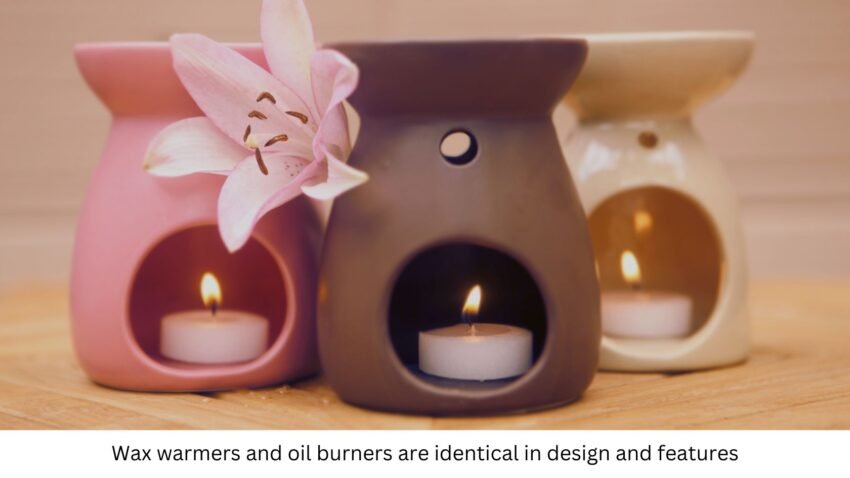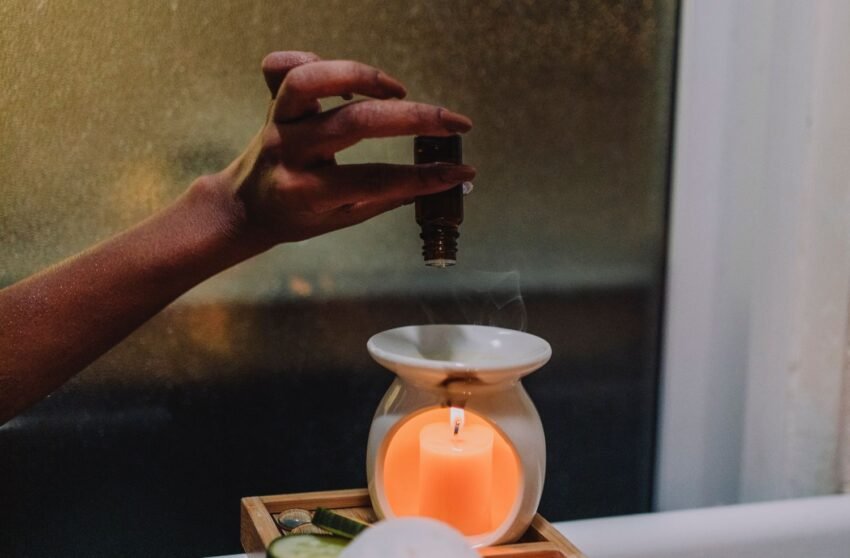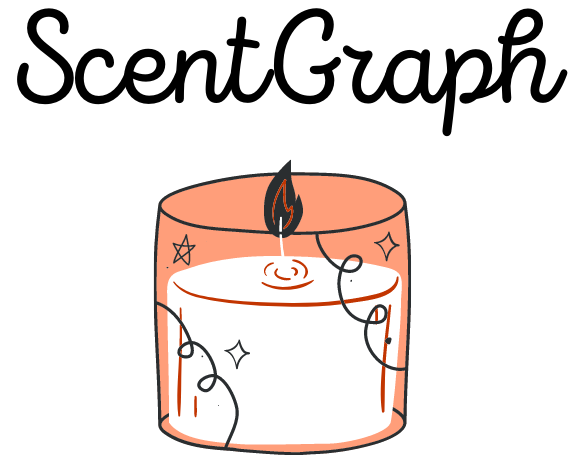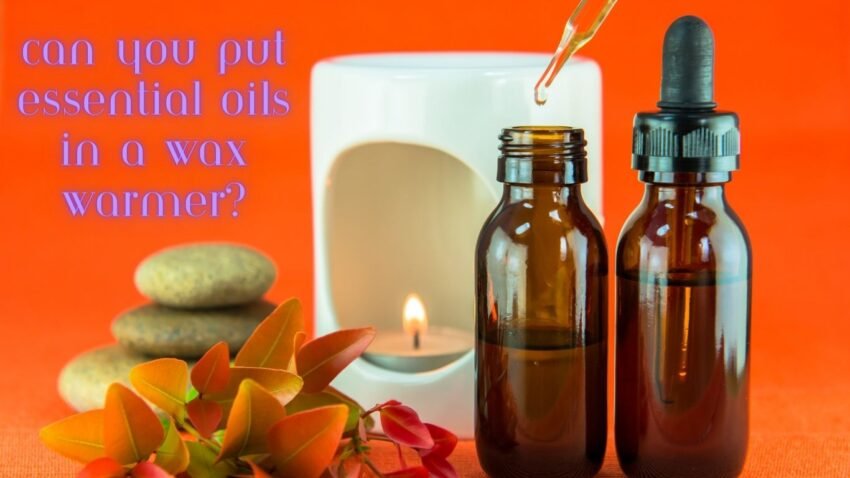A typical wax warmer looks very much like some types of essential oils diffusers. But can their usage be interchangeable even if they look the same? Can you put essential oils in a wax warmer?
Simply put, you can use essential oils in a wax warmer. However, you shouldn’t use the oils undiluted, or on flame-based wax warmers. It might even be possible to drop some fragrance or essential oils into spent wax on the wax warmer.
But that’s just scratching the surface. Let’s get a better understanding on putting essential oils in a wax warmer with a detailed discussion.
Things To Know When Adding Essential Oils To A Wax Warmer
A Note On Fragrance Oils, Essential Oils, Carriers, And More
There’s a good variety of fragrant oils available. While they often get clubbed under the umbrella of essential oils, there is more to the story that’s especially relevant to our current discussion.
Essential oils are generally derived from plant sources. There’s a large variety of essential oils, with different properties, including flash point temperature, aroma, and usability for oil diffusion.
Since the term is very wide, it’s necessary to be careful when ascribing properties to these oils.
Fragrance oils are a bit different. They’re often synthesized artificially and designed for specific purposes. Fragrance oils for use in candles, wax melts, and similar systems are designed to handle the expected temperatures. This way, they remain true to their expected fragrance.
Carriers are usually fat-based oils, but can also be other solvents used with essential oils. A carrier oil can somewhat modify the properties of the essential oil.
For example, a carrier like avocado oil might make it possible to use an essential oil for heat-based applications like use in a wax warmer. Many oil burners use water to act as a way to dilute the oil.
Before using an essential oil in a wax warmer, you should be certain that it can handle the heat. Check with the instructions on the bottle or with the manufacturer to be sure.
The Wax Warmer And Its Connection To Essential Oils And Fragrance Oils
A wax warmer is known by various names, including wax melter, and occasionally, as candle warmer, and few other names.
A conventional wax warmer melts scented pieces of wax, known as wax melts or wax tarts, through heat. As these wax tarts melt, the fragrance oil held within them is free, and aided by the heat, diffuses into the air.
If we were to simplify that logic, wax tarts are a carrier for fragrant oils (like essential oils) and the wax warmer works to provide an environment where these oils can diffuse into the air.
With this logic, wax warmers seem qualified to work with essential oils and fragrance oils.
But there are caveats.
Wax melts are made by striking a careful balance of wax and fragrant oils. This serves as a way to release the fragrance at a slow pace, while also acting as a carrier and a way to dilute these potent fragrance oils.
An average person choosing to drop some essential oils in the wax might not see the same results as those achieved by a professional.
The Similarity Between Wax Warmers And Oil Burners

If you look at a wax warmer and a heat-based oil diffuser (sometimes also known as oil burners), you’ll find they both look the same!
Both devices use a bowl made from a material that can handle heat. This material is often ceramic, though others are often employed too.
Then, there’s the heat source. This can be a tea light, electric incandescent lamp, electric circuits, or other mechanisms.
To be rather simplistic, the heat source warms up the bowl and its contents, which leads to the diffusion of fragrance.
This diffusion can come from wax melts or essential oils placed in a dilute solution.
Since the devices are structurally the same, their use can be interchangeable.
Choosing The Right Type Of Wax Warmer Or Diffuser
While all types of devices we discussed in the previous section work, those that employ electric circuits are generally preferable. These devices often contain thermostats and are usually better at regulating temperature than alternatives like using a tea light.
The tealight is slow to start and doesn’t know when the temperature in the bowl is right for cutting off. It will keep on providing heat until the tealight goes out.
The burn time of an average tealight is between 1-3 hours and it usually isn’t a problem, when used for diffusers or oil burners. However, the naked flame and the fact that it provides continuous heat, are a cause of concern.
So, thermostat based oil burners or wax melts are usually preferable.
How To Use Essential Oils In Wax Warmer – An Overview
1. Choosing The Right Wax Warmer
As discussed in the previous section, if you must put fragrance oils in a wax warmer, it’s better to use an electric wax warmer. Make sure the warmer is on a stable surface and has a suitable dish to hold the wax warmer.
You might also want to consider what the manufacturer says about using essential oils in the wax warmer. In some cases, this might void the warranty of your wax warmer. If you have a particularly unique or expensive device, this might be worth checking.
2. Don’t Use Pure Essential Oils Or Fragrance Oils Directly In A Wax Warmer
We know essential oils are concentrated and potent liquids. Pouring them directly onto a wax warmer is very likely to have undesired results.
In most cases, you’ll get a very strong, very heady smell that will be too overpowering and won’t feel or smell good at all.
In some cases, the oil might get singed or burnt, resulting in a very foul, burnt, and overpowering smell that’s just terrible.
Some essential oils, especially those classified as Category III flammable liquids have a flash point range of 73.4 °F (23 °C) to 140 °F (60 °C). When used directly in this situation, these might catch fire, thus becoming a fire hazard.
3. Steps To Using Essential Oils In A Wax Warmer
Whether you use wax warmers or oil burners, the smart move is always to dilute the fragrance or essential oils before using them.
Here are some steps to consider:
- Pour a generous amount of water into the wax warmer dish or bowl. You can fill most of it, just don’t fill it to the brim. There should be enough room for the oil. Equally important, we don’t want water spilling from the electric warmer. That’s a whole new can of very trouble worms!
- Put one drop of the fragrant oil into the water. It’s better to start small. You can always add more oils later. This way, the fragrance doesn’t get too overpowering and any problems with the oil can be handled easily.
- Switch on the wax warmer.
If you intend to add more fragrant oils, remember to add only a couple of drops at a time. These are very fragrant and expensive liquids. You need to be careful, even judicious with their use.
Diluting the oils is important. In this case, water prevents the oil from overheating or getting singed. Also, rather than receiving direct heat, the oils receive heat from the water. This offers some temperature management, resulting in better performance of the oil and fragrance.
4. Empty The Wax Warmer After Use
Once you’re done with the wax warmer, switch it off. Give it some time to cool, then dispose-off the water in the bowl.
Heat can cause oxidation and change in essential oils, so it makes good sense to regularly change this oil-water solution for better results.
Can You Add Essential Oils To Spent Wax In The Wax Warmer?
So, your wax warmer has used up its wax melts and now has plain, unscented wax remaining in the trough. Could adding a couple of drops to this wax be useful?
Theoretically, this is possible, but there are caveats. In this scenario, wax works as a way to dilute the essential oils, much like water in wax burners.
There isn’t much use for adding oil droplets on solid wax. You’ll have to switch on the wax warmer and wait till the wax melts.
Now, it might be possible to add a drop (or two) of your choice of oil to the molten wax. The wax will dilute the oils and also provide a way for the oils to diffuse safely.
Can I Use Perfumes Or Perfume Oils In A Wax Warmer?
Since we’re talking about using essential oils and fragrance oils in a wax warmer, let’s get a quick look at perfumes and perfume oils too.
Generally, it’s not a good idea to use perfumes or perfume oils in a wax warmer. The average perfume is intended to use over fabric or on skin. Similarly, perfume oils are intended for use directly on the skin.
Neither of these is designed to handle the heat of a wax warmer. This can result in bad smells, or some unpredictable behavior.
So, using perfumes or perfume oils in a wax warmer is not a good idea.
Always Be Cautious And Mindful

There is a need to be cautious with this approach. While the possibility of something going haywire is low, I always stress the importance of taking all reasonable precautions.
This approach can be as simple as a few considerations.
Don’t leave the operational wax warmer unattended.
Use a dropper or something similar to add oil droplets to the wax warmer trough. This is a simple way to ensure that too much oil doesn’t end up in the trough.
In case the water or wax is already warm, try to keep a good distance from the wax warmer before you add the oils. There might be some splattering. To be clear, the chance of a splatter is incredibly rare.
Yet, I’ll stress on being safe rather than risk being a statistic.
Consider Alternative Methods Of Diffusing Essential Oils
It is possible to put essential oils in a wax warmer. It might even work pretty well. But there shouldn’t be a reason to choose workarounds when so many convenient options are available.
Those who enjoy diffusing essential oils have plenty of methods at their disposal for this purpose.
Using a purpose-built oil diffuser is always a better choice. Besides, there are plenty of variations on oil diffusers.
If you haven’t already, try a reed diffuser, or even conventional oil diffusers or nebulizing diffusers will work. Reed diffusers are incredibly easy to use and refill for very desirable results.
Besides, there is no heating or electricity involved with reed diffusers, so you don’t have to watch their usage or worry about leaving the diffuser unattended.
You Can Put Essential Oils In A Wax Warmer, But Exercise Caution
As we see in this discussion, you can put essential oils in a wax warmer. It isn’t that big a leap, since wax warmers and essential oil burners are very similar in design and construction.
However, if you choose to go this route, remember to exercise some precautions. Remember to dilute the oils before using them. They shouldn’t be poured directly on the wax warmer.
Also, remember to start small and use just a couple of drops of oil for fragrance. Adding a few more drops is possible, if needed. However, going overboard and adding too much can result in unpleasantly strong odors.
Finally, I feel that while adding essential oils to a wax warmer is possible, it isn’t the best way to go about things. Purpose-built diffusers, especially something like reed diffusers can be a far superior choice for diffusing oils.

